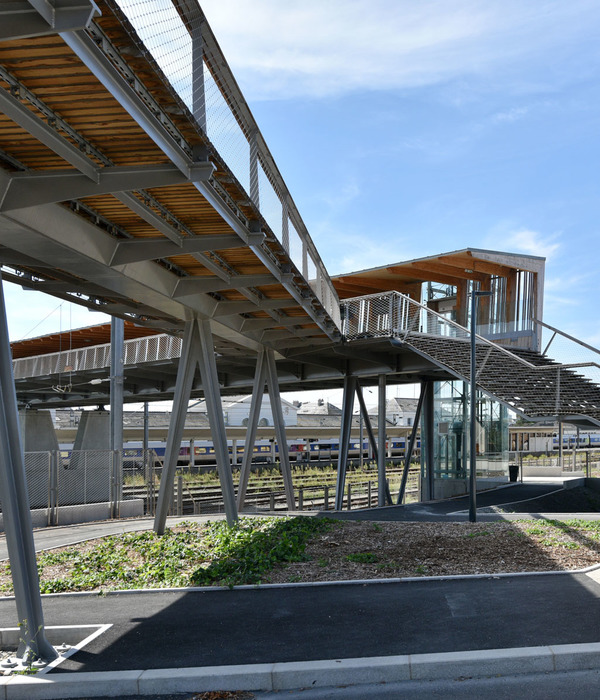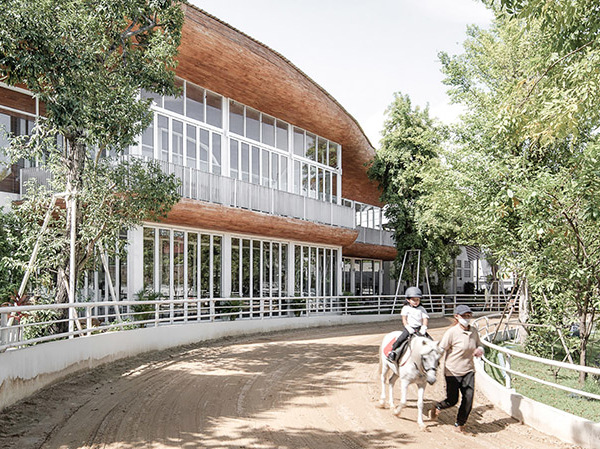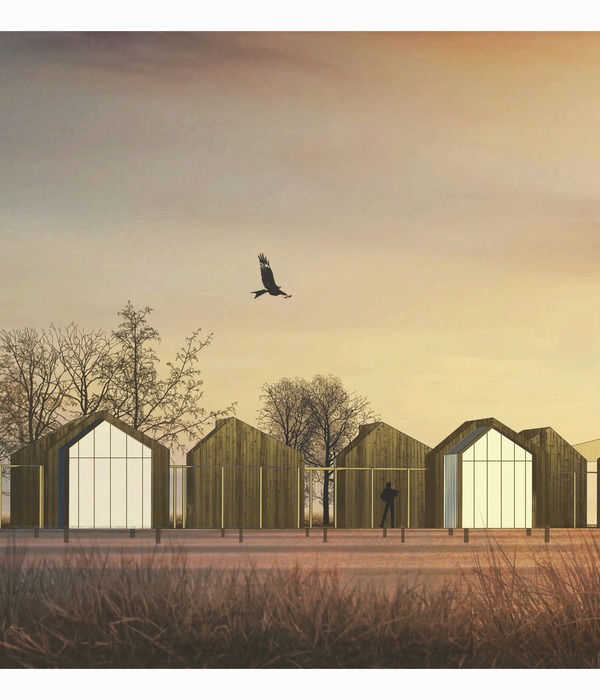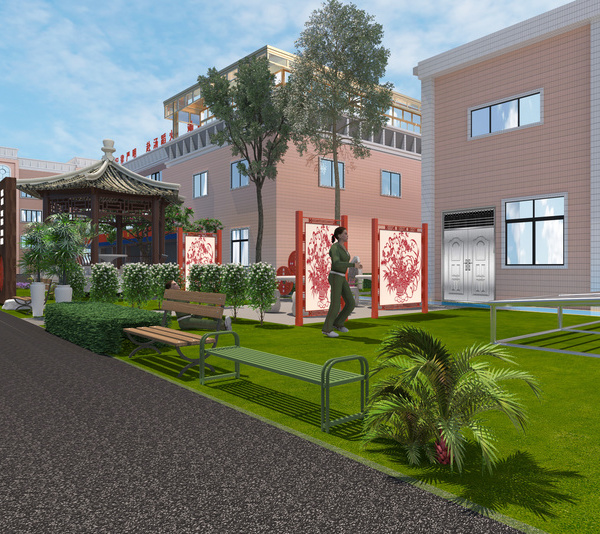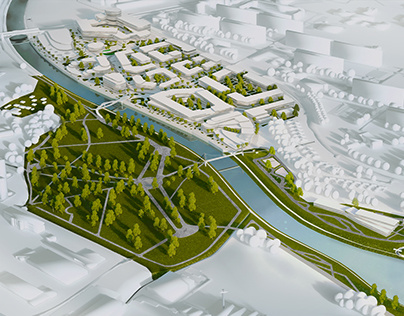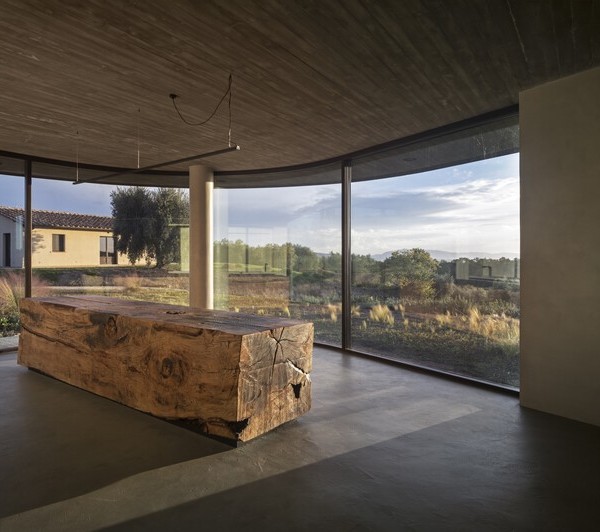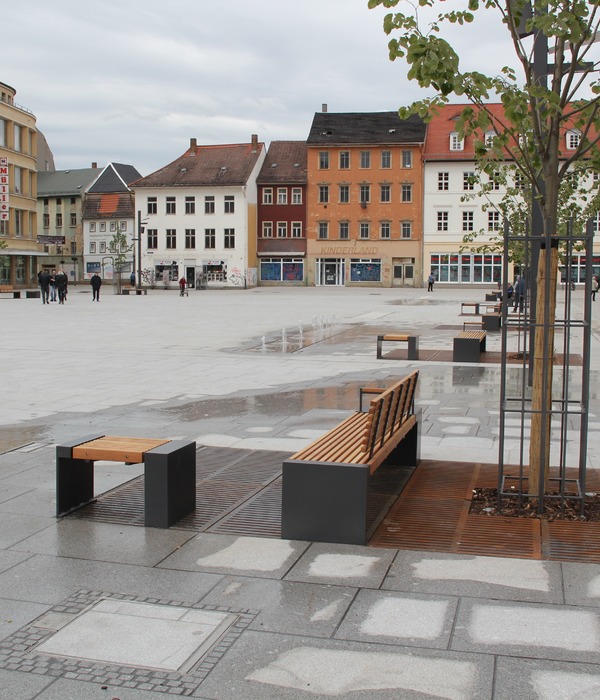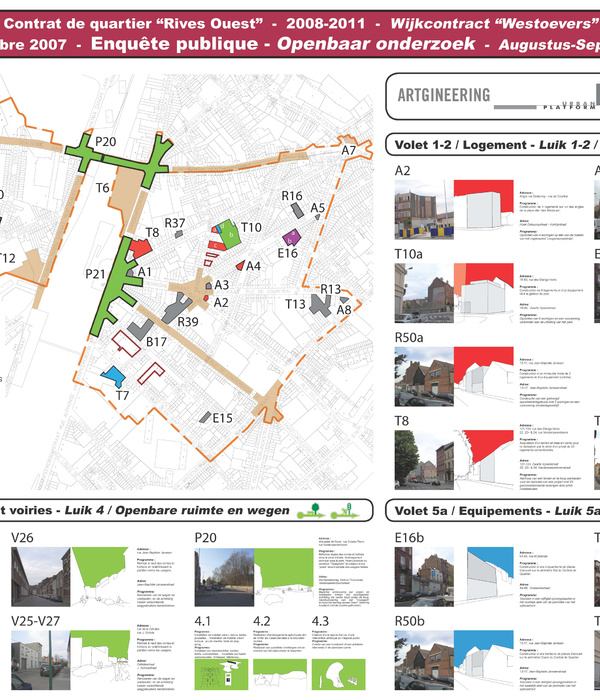- 项目名称:莫纳什大学地球科学园
- 项目地点:澳大利亚维多利亚州莫纳什大学克莱顿校区
- 景观设计:Rush Wright Associates
- 客户:莫纳什大学
Rush Wright Associates:莫纳什大学地球科学园的设计灵感来自澳大利亚维多利亚的地质地貌。该园是与地球科学家合作开发的,它为学生学习地质学、自然地理学和大气科学提供了一种更加直观的学习方式。
Rush Wright Associates:The Earth Sciences Garden at Monash University was inspired by the geology and geomorphology of Victoria, Australia. Developed in close collaboration with earth scientists, it provides a direct method for learning about geology, physical geography and atmospheric sciences.
该平面将多种多样的设计体验集合成了一个看似随意的整体,但其石头的排列在现场确立了一种占据主导地位的特殊秩序形式:陆地秩序。
The plan collages a diversity of designed experiences into an ensemble that appears casual, but the arrangement of stones quickly establishes that a special form of order prevails on the site: the order of the earth below.
▼基地平面 Site Plan
这幅线稿平面显示了正式平面拼贴的复杂性。我们摒弃了传统几何,采用碰撞和侵蚀、减法和邻接的方法,通过石头的大型秩序感将场景融合在一起。
This drawing shows the complexity of the formal plan collage. Eschewing traditional geometry in favour of a process derived from collision and erosion, subtraction and adjacency. What binds the scene is the sense of a larger order of the stones.
▼线稿平面布局 Line drawing of the arrangements
花园里包含许多地图信息:区域地貌图、海岸线卫星图像,以及我们城市河流的标志性弯道,地质图则藏在可见的场景之下,它在岩石布局中创造了一种神秘的连贯性。每一块砖都是根据软件程序“Grasshopper”创建的脚本放置的,这样就可以制作出完全精确的布局图,也可以确定每块砖的精确订购数量。
The garden was a tracing of many maps. Maps of regional geomorphology, satellite images of coastlines, and iconic bends of our city river. Underlying the visible scene lies the geological map, which creates an occult coherence in the rock placement. Each brick was placed using a script created in the software programme ‘Grasshopper’, enabling a completely precise set out drawing to be made, that also established precise quantities of each brick for ordering.
▼根据维多利亚地图铺设路面 A geological map of Victoria was used to pattern the paving
地球科学园有超过500多块岩石标本,它们组合排列在一个30×120米的场地上,与校园建筑紧密相连。整座花园看起来像一个嵌入大学传统秩序中的半天然石场。
The Earth Sciences Garden includes more than five hundred stone specimens arrayed in a 30-by-120-metre site, tightly bounded by campus buildings. The garden reads like a semi-natural stone field, inserted into the conventional order of the University.
砖的图案是由地质图归纳出来的。选择使用不透水粘土砖块是为了参考当地土壤,砖虽然是人造的,但它们的排列方式却是随机的,就像海滩上的沙粒一样。
The brick pattern is induced from geological maps. Brick was chosen to reference the underlying local soils, a notoriously impermeable clay. Bricks are manufactured, yet here they are arrayed, apparently randomly, like the grains of sand on the beach.
中心暂时性的沼泽和开裂的粘土的灵感来自Tarli Karng湖的形式,人们根据泥岩中发现的裂纹、水坑和波纹图案来判断粘土层全年是湿润还是干燥的。
A central ephemeral marsh and cracking clay pan was inspired by the form of Lake Tarli Karng. The cracking, puddling and rippling patterns which are found in mudstones are seen as the clay pan wets and dries through the year.
虽然花园看起来像是一个“天然”的环境,但这在很大程度上是一种幻觉。倾斜的石头与坚实的底座相平衡,这些岩石并不总是以它们自然的形态存在,而是以切片、切块、压碎用作铺路或户外家具的形式出现。
While the garden appears as a “natural” setting, much of this is an illusion. Angled stones are counterbalanced with substantial footings. The rocks are not always in their natural forms but sliced, diced, crushed for use as paving and furniture.
有些特殊的布局安排不仅是为了展示单独的岩石标本,也是为了解释它们与地貌和塑造可见景观的更大力量之间的关系。这些形式本身就创造了空间,营造了一种质朴的触感。
Particular arrangements are intended not only to display individual rock specimens, but to explain their relationship to geomorphology and larger forces shaping the visible landscape. These forms create spaces in their own right, and a rustic landscape of tactility.
场地植被来自维多利亚的许多生态区,反映了潜在的地质、土壤、降雨和有无火灾状态。我们还聘请了一名园艺顾问,协助将石材类型与具代表性的生态种植进行协调配合,通过脱离原有的地质地貌,讲述植物的历史来源以及它们与土壤类型的关系。
Plantings derive from the many ecological zones of Victoria, reflecting underlying geology, soils, rainfall and the presence or absence of fire. A horticultural consultant was engaged to assist in matching the stone types with representative eco-logical planting associations. This tells the story of the plants and their relationships to soil types, deprived from underlying geology and geomorphology.
下图的标志勾勒出维多利亚和塔斯马尼亚岛的轮廓,它们在15000年前穿过巴斯海峡连接在一起。该标志暗示了塑造海平面的力量,定位并描述了该地的布局。
The sign traces the outline of Victoria and Tasmania, joined as they were across the Bass Strait sea, just 15,000 years ago. Suggestive of forces shaping sea levels, the sign orientates and describes the layout of the site.
花园为学生学习地质学、自然地理学和地球科学提供了一种更加直观的学习方法。玄武岩柱设置在由相同的柱状结构切割而成的人行道上,学生们就在这里探索六边形玄武岩柱的露头。大约500个岩石标本通过其角度、方向和具体位置讲述了当地的地质故事,由它们形成的整体布局则创造了一系列不同的景观空间。绘制这些石头地图的过程中让学生们对实地工作有了更多的了解。
The garden provides a direct method for learning about geology, physical geography and earth sciences. Here students explore the outcrops of hexagonal basalt columns, which are set in a pavement sliced from the same columnar formations. The angle, orientation, and specific placement of approximately 500 rock specimens tell a local geological story, while the larger arrangements create a diverse series of landscape spaces. Mapping the stones gives the students handon insights of working in the field.
这些岩石是围绕着维多利亚的地质和地理特征的形状和形式排列的。这些地区包括基普斯兰和奥特威海岸、西部火山平原,以及威默玛尔利地区的沙丘地带。
The collection of rocks was arranged around tracings the shapes and forms of Victoria’s geological and geographical features. These include the rocky Gippsland and Otway coasts, the western volcanic plains, and the sandy dune fields of the Wimmera Mallee region.
▼地理特征 Geographical features
项目名称:莫纳什大学地球科学园
完成年份:2016年
景观设计:Rush Wright Associates
项目地点:澳大利亚维多利亚州莫纳什大学克莱顿校区
客户:莫纳什大学
Project name: Earth Sciences Garden Monash University
Completion Year: 2016
Landscape Design: Rush Wright Associates
Project location: Monash University Clayton Campus, Victoria Australia
Clients: Monash University
{{item.text_origin}}

